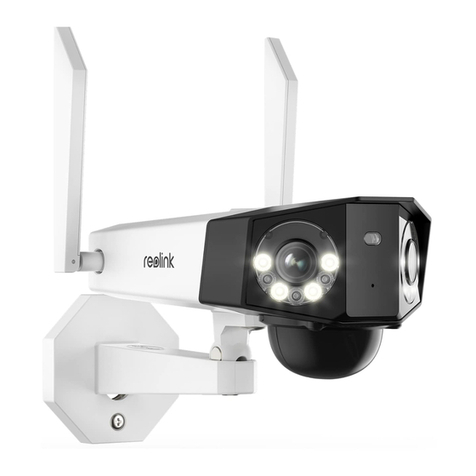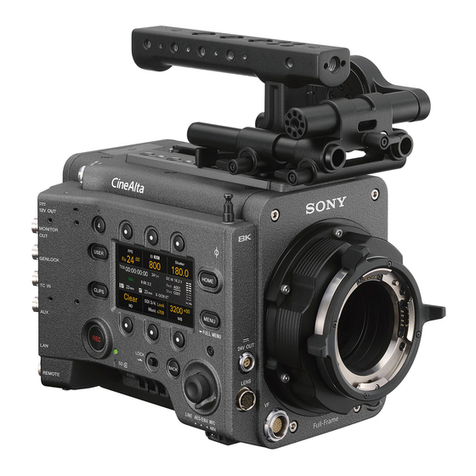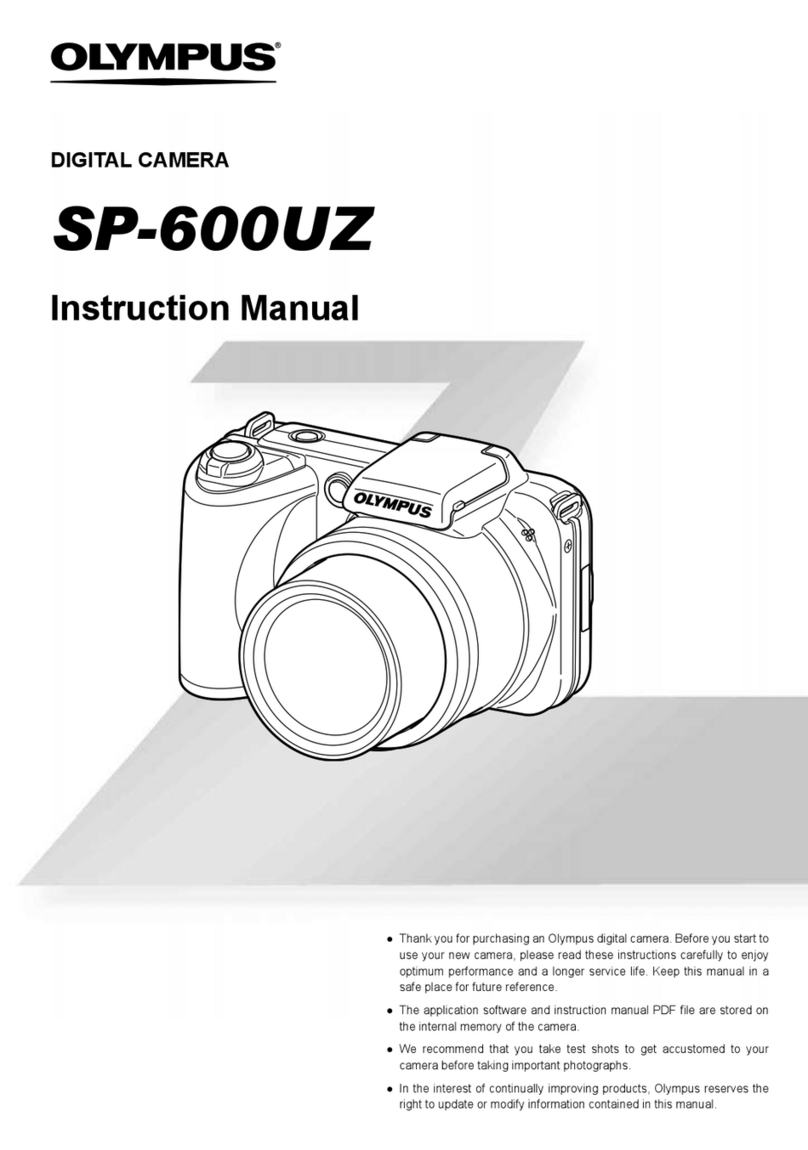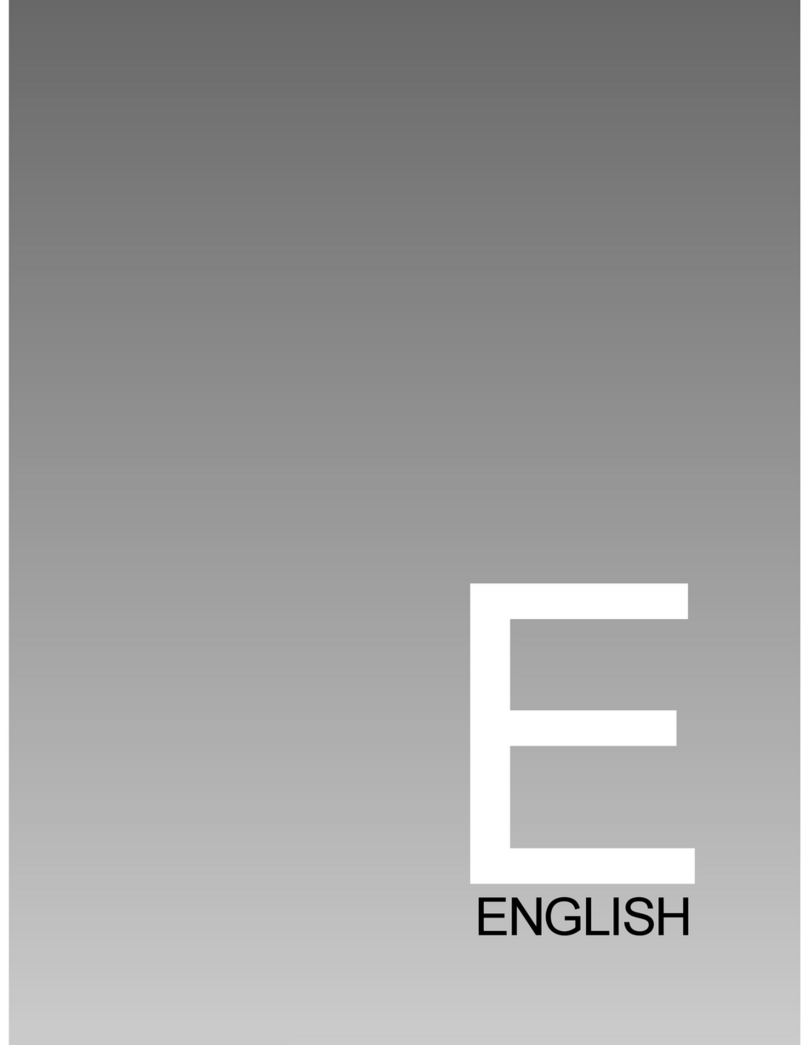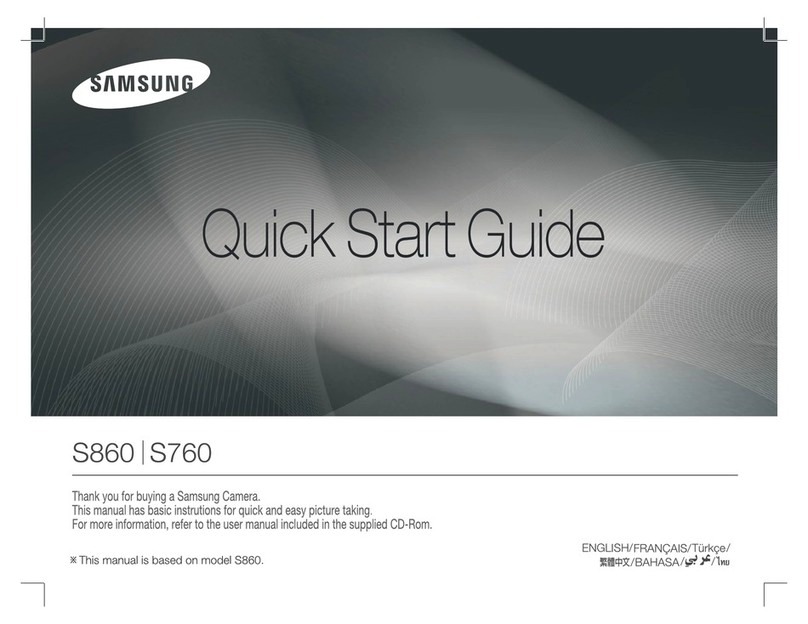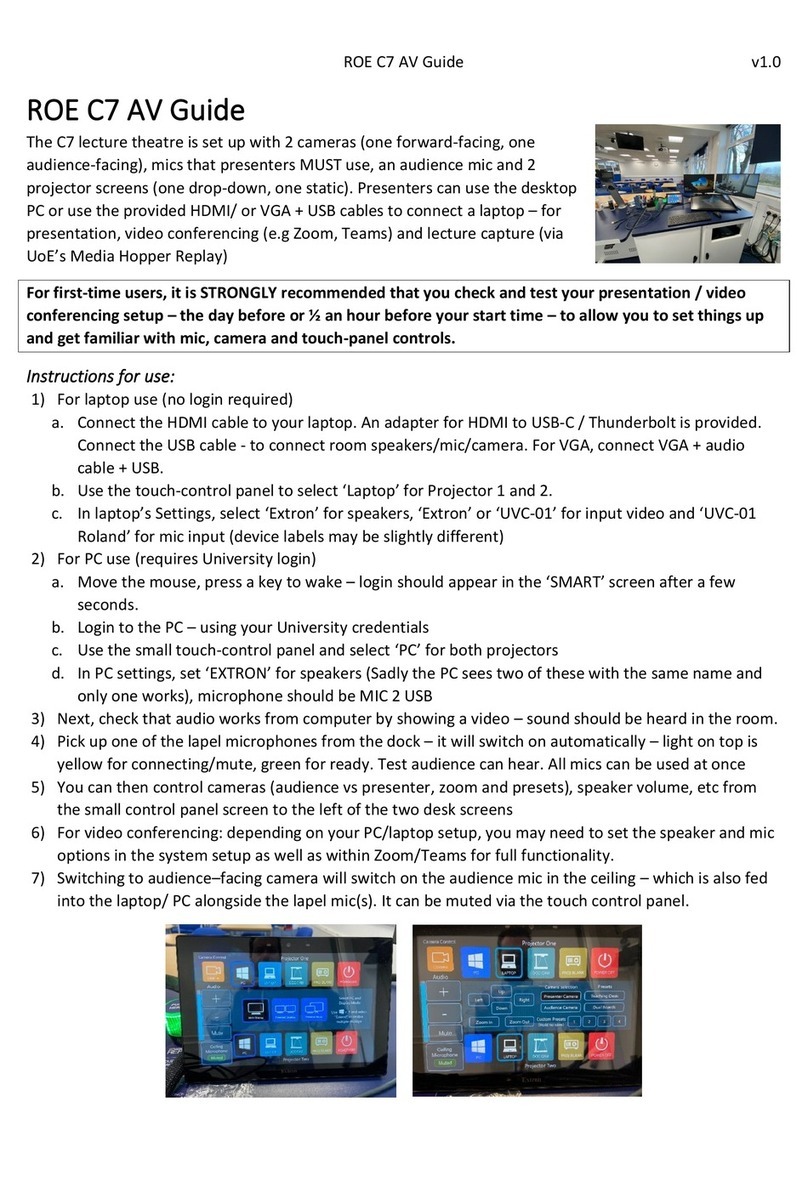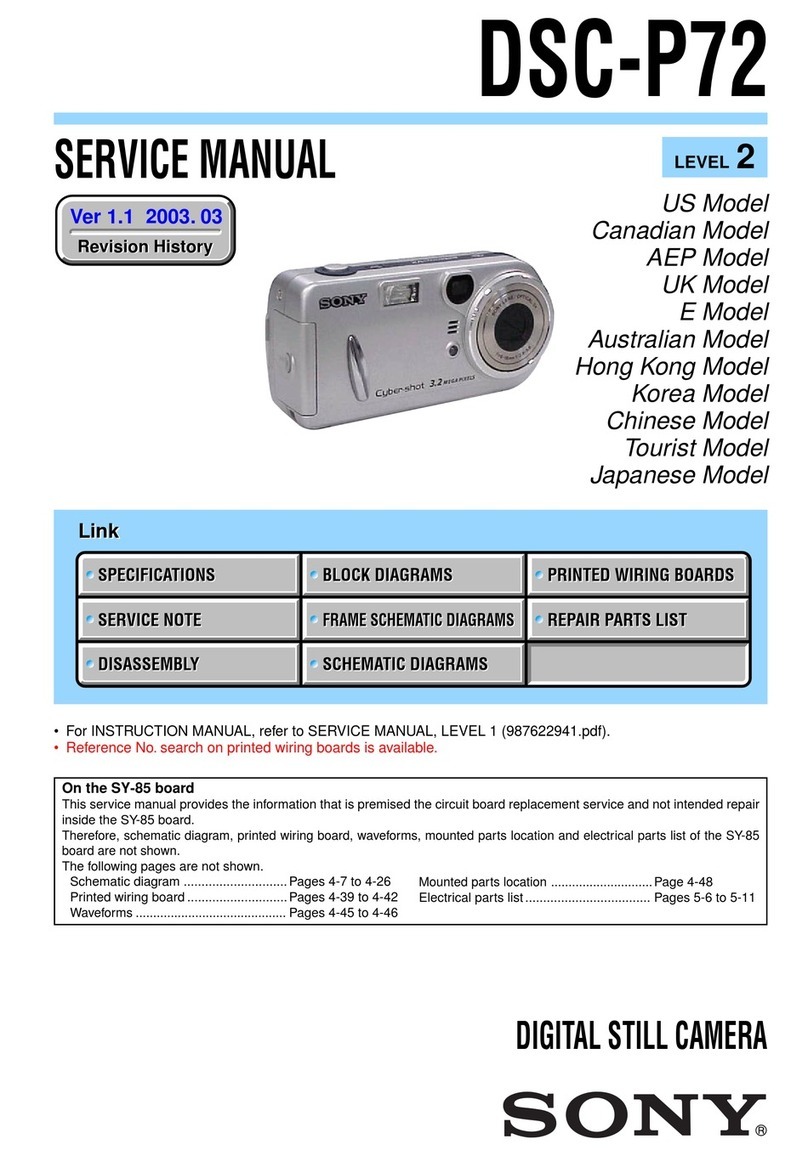Industrial combustion V Series Setup guide

V/LNV SERIES
Installation, Operation, and Service
Manual
!DANGER
WARNING
ONLY FACTORY AUTHORIZED BURNER SERVICE
PERSONNEL SHOULD START UP, ADJUST, OR SER-
VICE THIS EQUIPMENT
IC-SA-1511
02/2014


V/LNV SERIES
Installation, Operation, and Service Manual
Manual Number: IC-SA-1511
Release Date: September 2010
656-10219-000

Copyright © 2014 by Industrial Combustion
All rights reserved. No part of this document may be reproduced, stored in a retrieval
system, or transmitted in any form or by any means without the prior written consent of
Industrial Combustion.
Industrial Combustion
351 21st Street
Monroe, WI 53566
608-325-3141
ind-comb.com

PREFACE
Warning and caution references have been made in this manual and should be adhered to for smooth
operation of the burner.
Model designations are based on the type of fuel(s) to be fired and the amount of furnace pressure to be
overcome. Burner size is based on firing rate (rated input in Btu/hr).
Model Example: The model number on the nameplate is VLG-45, No. 2 oil and gas burner with input rated
at 4,500 MBtu/hr, against furnace pressures up to 2.0” W.C. at 60hz.
The installation of a burner shall be in accordance with the regulations of authorities having jurisdiction.
The equipment must be installed in accordance with applicable local, state, or provincial installation
requirements including the National Electrical Code (NEC) and Associated Insurance Underwriters. Where
applicable, the Canadian Gas Association (CGA) B149 and Canadian Standard Association (CSA) B140
and B139 (for oil burners) codes shall prevail. Oil and gas burning equipment shall be connected to flues
having sufficient draft at all times to assure safe and proper operation of the burner. The V series burners
are designed to burn either gas or light oil No. 1 or 2 as defined by ASTM D396-2010 specifications. Do
not use gasoline, crankcase oil, or any oil containing gasoline.
This symbol precedes information which, if disregarded, may result in injury to the user of the burner or to
others.
This symbol precedes information which, if disregarded, may result in damage to the burner.
NOTE: This symbol precedes information which is vital to the operation or maintenance of the burner.
Model Standards Fuel-Pressure Atomization
VG Gas
VL #2 Oil
VLG #2 Oil and Gas
LNVG Gas
LNVLG #2 Oil and Gas
NOTE: Firing at higher furnace pressures de-rates the burner by approximately 5% per 1/2 inch of additional
pressure. Consult with the factory.
Burner linkages, cams, fuel metering valves and positioning motors have not been pre-set by the factory for
proper combustion and must be set by a qualified and authorized technician. Failure to follow this procedure
could result in property damage and personal injury.
!Warning
!Caution
!Warning

Standard Specifications for VG-VL-VLG Series: Gas, #2 Oil, Gas/Oil Configuration
Burner
Model
Gas
Input
MBtu/
hr
#2 Oil
Input
US
GPH
BHP
@80%
Eff.
Furnace
Pressure
(“W.C.)
Blower
Motor
HP1
Blower
Motor
HP2
Remote
Oil Pump
Motor HP3
Standard
Gas Train
Pipe Size
(in.)
Min. Gas
Pressure
(“w.c.)
Blower Motor
Volt/PH 60 Hz.
V-13-1 1,300 9.3 31 0.4 1/2 3/4 1/2 1 8.6/9.25115/230/1
V-15-1 1,500 10.7 36 0.5 1/2 3/4 1/2 1 11.4/11.75115/230/1
V-17-1 1,700 12.1 40 0.7 1/2 3/4 1/2 1 14.3/14.75115/230/1
V-20-1 2,000 14.3 48 0.9 3/4 1 1/2 1 19.7/20.25115/230/1
V-21-1 2,100 15.0 50 1.0 3/4 1 1/2 1 21.5/22.15115/230/1
V-25-1 2,500 17.9 60 1.2 3/4 1 1/2 1 1/2 9.6/10.45115/230/1
V-30-1 3,000 21.4 71 1.4 3/4 1 1/2 2 8.7 115/230/1
V-34-1 3,400 24.3 81 1.8 3/4 1 1/2 2 10.3 115/230/1
V-35-2 3,500 25.0 83 1.9 1 1 1/2 1/2 2 8.1 115/230/1
V-40-2 4,000 28.6 95 1.2 1 1 1/2 1/2 2 10.4 115/230/1
V-42-2 4,200 30.0 100 1.3 1 1/242 1/2 2 11.5 208/230/460/3
V-45-2 4,500 32.1 107 1.4 2 2 1/2 2 10.8 208/230/460/3
V-50-2 5,000 35.7 119 1.8 2 3 3/4 2 13.6 208/230/460/3
V-54-2 5,400 38.6 129 2.1 3 3 3/4 2 19.2 208/230/460/3
V-55-2 5,500 39.3 131 2.2 3 3 3/4 2 19.7 208/230/460/3
V-60-3 6,000 42.9 143 2.7 5 - 3/4 2 17.6 208/230/460/3
V-63-3 6,300 45.0 150 1.8 5 - 3/4 2 19.4 208/230/460/3
V-70-3 7,000 50.0 167 2.2 5 - 3/4 2 1/2 15.8 208/230/460/3
V-80-3 8,000 57.1 190 2.8 5 - 1 2 1/2 15.1 208/230/460/3
V-84-3 8,400 60.0 200 3.1 7 1/2 - 1 2 1/2 15.5 460/3
V-90-3 9,000 64.3 214 3.5 7 1/2 - 1 1/2 2 1/2 17.4 460/3
V-100-3 10,000 71.4 238 2.7 10 - 1 1/2 2 1/2 20.5 460/3
V-105-3 10,500 75.0 250 2.8 10 - 1 1/2 2 1/2 44.7 460/3
V-110-3 11,000 78.6 262 3.0 10 - 1 1/2 2 1/2 48.7 460/3
V-120-4 12,000 85.7 286 3.6 15 - 1 1/2 2 1/2 34.2 460/3
V-126-4 12,600 90.0 300 4.3 15 - 1 1/2 2 49.1 460/3
V-147-4 14,700 105.0 350 4.3 15 - 1 1/2 2 2.5 PSI 460/3
V-168-4 16,800 120.0 400 1.0 15 - 1 1/2 2 3.1 PSI 460/3
Input is based on fuel BTU content, listed furnace pressure and altitude of 2,000 feet or less. If altitude >2,000 feet and <8,000
feet, derate capacity 4% per 1,000 feet over 2,000. Consult factory for higher altitudes. If furnace pressure exceeds listed value,
derate capacity 5% for every 0.5 “w.c. of pressure in excess of stated. Consult factory if derate exceeds 20%. Gas input is based
on natural gas with 1,000 BTU/cu. ft., 0.60 gravity. For total pressure at manifold, add furnace pressure. Oil input based on
140,000 BTU/gal. Consult factory for 50 Hz. applications.
1Motor ratings for gas only or gas/oil burners using a remote oil pump
2Motor ratings for oil only and gas/oil burners using a direct drive oil pump
3Remote oil pump is optional for frame size 1 and 2 but standard for frame sizes 3 and 4. All pump motors are 115/230/1
41 1/2 HP blower motor voltage is 115/230/1
5Low/High and Full Modulation minimum gas pressure
6Lower gas supply pressure configurations available for New York City requirements

<30 PPM Low NOx Standard Specifications for LNVG-LNVLG Series: Gas, Gas/Oil Configuration
Burner
Model
Gas
Input
MBtu/
hr
#2 Oil
Input
US
GPH
BHP
@80%
Eff.
Furnace
Pressure
(“W.C.)
Blower
Motor
HP
Remote
Oil Pump
Motor HP
Standard
Gas Train
Pipe Size
(in.)
Min. Gas
Pressure
(“w.c.)
FGR
Line
Piping
(in.)
Blower Motor
Volt/PH 60 Hz.
LNV-13-1 1,300 9.3 31 0.5 3/4 1/2 1 9.2 4 115/230/1
LNV-15-1 1,500 10.7 36 0.6 3/4 1/2 1 11.7 4 115/230/1
LNV-17-1 1,700 12.1 40 0.7 3/4 1/2 1 14.7 4 115/230/1
LNV-20-1 2,000 14.3 48 1.0 3/4 1/2 1 20.2 4 115/230/1
LNV-21-1 2,100 15.0 50 1.1 3/4 1/2 1 22.1 4 115/230/1
LNV-25-1 2,500 17.9 60 1.4 3/4 1/2 1 1/2 10.4 4 115/230/1
LNV-30-2 3,000 21.4 71 1.5 2 1/2 2 8.7 4 115/230/460/3
LNV-34-2 3,400 24.3 81 1.9 3 1/2 2 10.3 4 115/230/460/3
LNV-35-2 3,500 25.0 83 2.0 3 1/2 2 8.1 4 115/230/460/3
LNV-40-2 4,000 28.6 95 1.4 3 1/2 2 10.4 4 115/230/460/3
LNV-42-2 4,200 30.0 100 1.5 31/2 2 11.5 4 208/230/460/3
LNV-45-2 4,500 32.1 107 1.6 3 1/2 2 10.8 4 208/230/460/3
LNV-50-2 5,000 35.7 119 2.0 3 1/2 2 13.6 4 208/230/460/3
LNV-54-3 5,400 38.6 129 2.4 5 3/4 2 19.2 4 208/230/460/3
LNV-55-3 5,500 39.3 131 2.5 5 3/4 2 19.7 4 208/230/460/3
LNV-60-3 6,000 42.9 143 3.0 5 3/4 2 17.6 4 208/230/460/3
LNV-63-3 6,300 45.0 150 2.0 5 3/4 2 19.4 4 208/230/460/3
LNV-70-3 7,000 50.0 167 2.5 7 1/2 3/4 2 1/2 15.8 4 460/3
LNV-80-3 8,000 57.1 190 3.2 7 1/2 3/4 2 1/2 15.1 4 460/3
LNV-84-3 8,400 60.0 200 3.5 7 1/2 1 2 1/2 15.5 4 460/3
LNV-90-3 9,000 64.3 214 4.0 10 1 2 1/2 17.4 4 460/3
LNV-100-4 10,000 71.4 238 3.2 15 1 1/2 2 1/2 20.5 6 460/3
LNV-105-4 10,500 75.0 250 3.4 15 1 1/2 2 1/2 44.7 6 460/3
LNV-110-4 11,000 78.6 262 3.6 15 1 1/2 2 1/2 48.7 6 460/3
LNV-120-4 12,000 85.7 286 4.2 15 1 1/2 2 1/2 34.2 6 460/3
LNV-126-4 12,600 90.0 300 4.8 15 1 1/2 2 49.1 6 460/3
LNV-147-4 14,700 105.0 350 4.8 15 1 1/2 2 2.5 PSI 6 460/3
Input is based on fuel BTU content, listed furnace pressure and altitude of 2,000 feet or less. If altitude >2,000 feet and <8,000
feet, derate capacity 4% per 1,000 feet over 2,000. Consult factory for higher altitudes. If furnace pressure exceeds listed value,
derate capacity 5% for every 0.5 “w.c. of pressure in excess of stated. Consult factory if derate exceeds 20%. Gas input is based
on natural gas with 1,000 BTU/cu. ft., 0.60 gravity. For total pressure at manifold, add furnace pressure. Oil input based on
140,000 BTU/gal. Consult factory for 50 Hz. applications.

V Series Standard Dimensions - Uncontrolled NOx Configuration
Accompanying dimensions are for layout purposes only.
Burner Frame Size & Model Number
DIM Size 1 Size 2 Size 3 Size 4
Length in inches
Overall length A 37 1/4 40 3/8 45 1/4 51 1/8
Width in inches
Center line to right side (standard) M 14 13 5/8 16 7/8 21 7/8
Center line to left side (standard) N 12 7/16 13 7/8 15 1/4 15 1/4
Center line to right side (inverted) N 12 7/16 13 7/8 15 1/4 15 1/4
Center line to left side (inverted) S 14 13 5/8 16 7/8 21 7/8
Height in inches
Center line to top (standard) J 9 1/2 9 1/8 8 3/8 9 3/4
Center line to bottom (standard) K 11 3/4 14 7/16 18 5/8 19 1/4
Center line to burner support (standard) P 11 3/4 14 7/16 18 5/8 19 1/4
Center line to top (inverted) R 28 30 5/8 34 3/4 35 1/2
Center line to CL of main gas inlet (inverted) Q 6 7/8 8 7/8 10 1/8 11 3/4
Blast tube dimensions in inches
Extension (standard) C 4445
Extension (maximum) C 5556
Diameter D 8 1/4 10 11 1/2 13 5/8
Panel box depth in inches
Panel box depth G 7 3/8 7 3/8 7 3/8 7 3/8
Mounting flange dimensions in inches
Diameter H 12 7/8 15 16 3/4 17 1/2
Bolt circle diameter I 11 1/4 13 1/4 15 1/4 15 3/8
Gas inlet measurement in inches
Center line to main gas inlet L 9 5/8 9 5/8 10 1/2 11
Mounting flange to main gas inlet E 6 7/8 7 1/4 7 5/8 9 1/2
AC
D
E
G
H DIA
J
KP
4X 3/4
I B.C.
Q
N
LM
N
LS 4X Ø3/4
I B.C.
Q
H DIA
4"
R
D
C
A 3/4"
G
E
C
L
C
L
C
LC
L
C
L
C
L

V Series Standard Dimensions - <30 PPM Low NOx Configuration
Accompanying dimensions are for layout purposes only.
Burner Frame Size & Model Number
DIM Size 1 Size 2 Size 3 Size 4
Length in inches
Overall length A 37 1/4 40 3/8 45 1/4 51 1/8
Width in inches
Center line to right side (standard) M 14 13 5/8 16 7/8 21 7/8
Center line to left side (standard) N 12 7/16 13 7/8 14 5/8 17
Center line to right side (inverted) N 12 7/16 13 7/8 14 5/8 17
Center line to left side (inverted) S 14 13 5/8 16 7/8 21 7/8
Height in inches
Center line to top (standard) J 9 1/2 9 1/8 8 3/8 9 3/4
Center line to bottom (standard) K 11 3/4 14 7/16 18 5/8 19 1/4
Center line to burner support (standard) P 11 3/4 14 7/16 18 5/8 19 1/4
Center line to top (inverted) R 28 30 5/8 34 3/4 35 1/2
Center line to CL of main gas inlet (inverted) Q 6 7/8 8
Blast tube dimensions in inches
Extension (standard) C 4445
Extension (maximum) C 5556
Diameter D 8 1/4 10 11 1/2 13 5/8
Panel box depth in inches
Panel box depth G 7 3/8 7 3/8 7 3/8 7 3/8
Mounting flange dimensions in inches
Diameter H 12 7/8 15 16 3/4 17 1/2
Bolt circle diameter I 11 1/4 13 1/4 15 1/4 15 3/8
Gas inlet measurement in inches
Center line to main gas inlet L 9 5/8 9 5/8 10 1/2 11
Mounting flange to main gas inlet E 6 7/8 7 1/4 7 5/8 9 1/2
Flue gas recirculation (FGR) in inches
Center line of FGR to mounting flange W 20 1/4 22 1/8 25 1/2 30 1/4
Center line of burner to center line of FGR X 4 5 1/4 8 7 1/4
Diameter Y 9 9 9 11
Bolt circle diameter Z 7 1/2 7 1/2 7 1/2 9 1/2
C
LC
L
C
L
4"
R
M L
N
H DIA
Q
4X Ø.75
I B.C.
A 3/4"
W
X
G
8X Ø3/4
Z B.C.
Y DIA
E
D
C
L
C
L
CL
C
AC
J
K
X
D
E
W
8X Ø3/4
Z B.C.
G
Y DIA
M
L
N
Q
P


IC-SA-1511 (02/2014)
V/LNV Series Manual
i
V/LNV Series
Table of Contents
CHAPTER 1 Introduction 1-1
1.1 — Overview 1-1
1.2 — Description 1-1
1.3 — Operating Controls 1-2
1.3.1 — Control Panel 1-2
1.3.2 — Flame Safeguard Controls 1-3
1.3.3 — Firing Rate Controls (LHL & Full Modulation Burners) 1-3
1.4 — Combustion Air Handling System 1-3
1.4.1 — Boiler Room Combustion Air 1-4
1.5 — Firing Head 1-5
1.6 — Oil System 1-6
1.6.1 — Oil System Components 1-6
1.6.2 — Operation 1-9
1.7 — Gas Handling System 1-9
1.7.1 — Main Gas Train Components 1-10
1.7.2 — Pilot Gas Train Components 1-13
1.7.3 — Operation 1-13
CHAPTER 2 Installation 2-1
2.1 — Application 2-1
2.2 — Draft Conditions 2-1
2.3 — Combustion Air Supply 2-1
2.4 — Combustion Chamber Recommendations 2-2
2.4.1 — Combustion Chamber Drawings - Firetube Boiler Application 2-2

ii IC-SA-1511 (02/2014)
V/LNV Series Manual
2.4.2 — Combustion Chamber Dimensions - Inverted/ Standard Config. Firetube 2-3
2.4.3 — Combustion Chamber Drawings - Watertube/ Cast Iron Boiler Applications 2-4
2.4.4 — Combustion Chamber Dimensions - Inverted/ Standard Config. Watertube 2-5
2.5 — Installation 2-6
2.6 — Packing Plastic Insulation Around Oven (If Dry Oven Supplied) 2-7
2.7 — Oil Piping 2-8
2.7.1 — Pressure Atomization Oil Piping 2-8
2.7.2 — Two Pipe - Single Burner Operation 2-8
2.7.3 — Suction Line Sizing 2-8
2.7.4 — Return Line Sizing 2-8
2.7.5 — Two Pipe - Multiple Burner System 2-9
2.8 — Gas Piping 2-11
2.9 — Installation Checklist 2-12
2.10 — Firing Modes 2-13
CHAPTER 3 Operation 3-1
3.1 — Preparations for Starting 3-1
3.1.1 — Oil Flow 3-2
3.1.2 — Oil Pressure 3-2
3.1.3 — Firing Preparations for Oil Burners 3-2
3.1.4 — Firing Preparations for Gas Burners 3-2
3.1.5 — Burner Settings 3-3
3.1.6 — Combustion Settings 3-3
3.1.7 — Test Equipment 3-3
3.2 — Electrical Interference Test 3-3
3.2.1 — Gas Fired 3-4
3.2.2 — Oil Fired 3-4
3.3 — Gas Pilot Flame Adjustment 3-4
3.4 — Startup Sequence 3-4
3.5 — Automatic Shutdown 3-5
3.6 — Manual Shutdown 3-5

IC-SA-1511 (02/2014)
V/LNV Series Manual
iii
3.7 — Safety Shutdown 3-5
3.8 — Startup and Operating 3-6
3.8.1 — Gas Burners 3-6
3.8.2 — Oil Burners 3-7
3.8.3 — Combustion Gas-Oil Burners 3-8
3.8.4 — Fuel Chart Comparison for O2- Excess Air - CO23-9
3.9 — Normal Operation 3-10
3.10 — Shutdown 3-10
CHAPTER 4 Adjustments 4-1
4.1 — Overview 4-1
4.2 — Combustion Adjustment on Oil and Gas 4-1
4.2.1 — Stack Temperature 4-1
4.2.2 — Smoke Measurement 4-2
4.2.3 — Test Equipment 4-2
4.2.4 — Gas Adjustments 4-2
4.2.5 — Fuel Oil Adjustments 4-2
4.3 — Electrical Interference Test 4-2
4.3.1 — Gas Fired 4-2
4.3.2 — Oil Fired 4-3
4.4 — Burner Ignition Adjustment 4-3
4.4.1 — Gas Pilot Flame Adjustment 4-3
4.4.2 — Gas Pilot Turndown Test 4-3
4.4.3 — Direct Spark Oil Only (VL) Adjustment (V13-55) 4-4
4.4.4 — Burner Pilot Settings 4-4
4.4.5 — Drawer Assemblies for Firetube Boiler Applications 4-6
4.4.6 — Drawer Assemblies for Watertube/ Cast Iron Boiler Applications 4-9
4.5 — Gas System 4-13
4.5.1 — Gas Pressure 4-13
4.5.2 — Gas Flow 4-13
4.5.3 — Main Gas Pressure Regulator 4-13
4.5.4 — Low Gas Pressure Switch 4-13
4.5.5 — High Gas Pressure Switch 4-14
4.5.6 — Gas Combustion Adjustment 4-14
4.5.7 — On-Off Gas Burner Adjustment 4-14
4.5.8 — Low-High-Off/Low Gas Burner Adjustment 4-15

iv IC-SA-1511 (02/2014)
V/LNV Series Manual
4.5.9 — Full Modulation Gas Burner Adjustment 4-16
4.5.10 — Low NOx Full Modulation Combination Gas Burner Adjustment 4-16
4.6 — Oil System 4-17
4.6.1 — On-Off Oil Burner Adjustment 4-18
4.6.2 — Low-High-Off/Low Oil Burner Adjustment 4-18
4.6.3 — Full Modulation Oil Burner Adjustment 4-18
4.7 — Combination Gas-Oil System 4-19
4.7.1 — On-Off Combination Gas-Oil Burner Adjustment 4-20
4.7.2 — Low-High-Off/Low Combination Gas-Oil Burner Adjustment 4-20
4.7.3 — Full Modulation Combination Gas-Oil Burner Adjustment 4-20
4.8 — Modulation Control 4-20
4.8.1 — Linkage Control Adjustment 4-20
4.8.2 — Cam Trim Adjustment 4-21
4.8.3 — Parallel Positioning Adjustment 4-21
4.9 — Air and Fuel Controls 4-22
4.9.1 — Air Flow Control 4-22
4.9.2 — Fuel and Air Flow Settings 4-23
CHAPTER 5 Maintenance 5-1
5.1 — Overview 5-1
5.2 — Control System 5-1
5.2.1 — Programming Control 5-2
5.3 — Air Handling System 5-2
5.4 — Impeller and Inlet Cone 5-3
5.5 — Firing Head Inspection 5-3
5.5.1 — Drawer Assembly 5-3
5.6 — Pilot and Ignition Electrode 5-3
5.7 — Flame Scanner 5-4
5.8 — Oil Nozzle 5-4

IC-SA-1511 (02/2014)
V/LNV Series Manual
v
5.9 — Diffuser 5-5
5.10 — Firing Rate Controls 5-5
5.11 — Burner Mounting Inspection 5-5
5.12 — Oil System 5-5
5.13 — Gas System 5-5
5.13.1 — Solenoid Valves 5-6
5.13.2 — Motorized Main Gas Valves 5-6
5.14 — Electrical System 5-6
5.14.1 — Electric Motors 5-6
5.15 — Checking Flame Failure 5-6
5.15.1 — Pilot Flame Failure 5-6
5.15.2 — Failure to Light Main Flame 5-7
5.15.3 — Loss of Flame 5-7
5.16 — Extended Shutdown 5-7
5.17 — Maintenance Flow Chart Recommended Test Schedule 5-8
CHAPTER 6 Troubleshooting 6-1
6.1 — Awareness 6-1
6.2 — Emergency Shutdown 6-2
6.3 — Troubleshooting 6-3
CHAPTER 7 LNV Series FGR System 7-1
7.1 — Description 7-1
7.2 — Duct Sizing 7-2
7.3 — FGR Shutoff Valve 7-3

vi IC-SA-1511 (02/2014)
V/LNV Series Manual
7.4 — FGR Control Valve 7-3
7.4.1 — Low NOx Full Modulation Combination Gas-Oil Burner Adjustment 7-4
7.5 — Air/FGR Damper Assembly 7-5
7.6 — Stack Temperature Interlock 7-5
7.7 — Blast Tube Temperature Interlock 7-5
WARRANTY POLICY
STARTUP/SERVICE REPORT

IC-SA-1511 (02/2014)
V/LNV Series Manual
1-1
CHAPTER 1 Introduction
1.1 — Overview
V series burners are assembled, wired, and tested at the factory. They are listed by the Underwriters
Laboratory (UL), CSD-1, NFPA-85, Factory Mutual (FM), including the National Electrical Code (NEC), and
associated insurance underwriters. Where applicable, the Canadian Gas Association (CGA) B149 and the
Canadian Standards Association (CSA) B140 codes shall prevail. Other regulatory agency control options
are available
The operator must be familiar with the individual functioning of all controls to understand the operations
and procedures described in this manual.
1.2 — Description
The Industrial Combustion V series burners are designed to operate with gas and light oil. The burners are
designed for automatic, unattended operation except for periodic inspection and maintenance. The burner
and control panel components require little attention except for occasional cleaning.
Only factory authorized burner service personnel should startup, adjust, or service this equipment.
Burner linkages, cams, fuel metering valves and positioning motors have not been pre-set by the factory for
proper combustion and must be set by a qualified and authorized technician. Failure to follow this procedure
could result in property damage and personal injury.
!Caution
!Warning

Introduction
1-2 IC-SA-1511 (02/2014)
V/LNV Series Manual
The burners are available in the following configurations:
1.3 — Operating Controls
1.3.1 — Control Panel
The burner control panel may be integral to the burner or remote, and contains: a flame safeguard
programming control, motor relays (starters), and terminal strips mounted internally on a panel subbase.
Lights, switches, and a control circuit breaker are mounted externally on the panel.
The following table lists typical panel items. Some or all of the items may be provided depending on the
burner configuration selected.
Standard Configuration Optional Configuration
V13-25 On-Off Low-High-Off (LHO), Low-High-Low (LHL) or Full Modulation
V30-63 Low-High-Off (LHO) Low-High-Low (LHL) or Full Modulation
V70-168 Full Modulation None
Control Description
On-Off Burner Switch To manually turn the burner on or off.
Fuel Selector Switch Gas-Off-Oil
Gas position: Selects gas as the firing fuel.
Off position: Burner is off.
Oil position: Selects oil as the firing fuel.
Control Circuit Breaker Supplementary low overcurrent protection only. No larger than 15 amps.
Auto-Manual Modulation
Selector Switch
Auto position: Selects boiler modulation control. In this position, the burner will
operate automatically in response to load demand.
Manual position: Selects 135 ohm potentiometer for manual modulating control.
Manual Modulating Control 135 ohm (for full modulation burners only) increases or decreases the burner
firing rate manually.
Signal Lamps a) POWER ON (white): illuminates when the control circuit is energized
(powered).
b) IGNITION (amber): illuminates when the ignition transformer is powered, and
the pilot valve is energized (opened).
c) MAIN FUEL (green): illuminates when the main fuel valve or valves are
energized (open).
d) FLAME FAILURE (red): illuminates when the flame safeguard system fails to
detect pilot or main flame.
Read the flame safeguard manual and fully understand its contents before attempting to operate this
equipment. Failure to do so may result in serious personal injury or death.
!Warning

IC-SA-1511 (02/2014)
V/LNV Series Manual
1-3
Introduction
1.3.2 — Flame Safeguard Controls
The flame safeguard controls the burner's operating sequence: pre purge, trial for ignition, main flame and
shutdown. This safety control also includes flame detection system to confirm proper operation or cause a
manual-reset lockout in the event of a pilot or main flame failure. External controls connected to the flame
control's limit circuit, such as the boiler operating control, will trigger normal burner startup, and upon
reaching operating set point, normal burner shutdown. Safety devices in the flame control's running
interlock circuit, such as the combustion air switch, will cause an immediate safety shut down if conditions
are not correct for safe operation. Reference the manufacturer's literature for additional information on
either the flame safeguard control or other safety controls.
1.3.3 — Firing Rate Controls (LHL & Full Modulation Burners)
LHL burners use a two position actuator* and linkage to control the air and gaseous fuels (oil burners
control oil flow with electric valves). At startup fire, the air damper and fuel valves are positioned for stable
low fire operation. When the actuator is commanded to its second position, the linkage drives the air
damper and fuel valves open until high fire is reached. LHL burners typically use a boiler-mounted control
that keeps the burner at its low fire rate to prevent thermal shock, until conditions are suitable for high fire.
Full modulation burners are capable of firing at any rate between the burner's low and high fire limits. For
“single point” modulating systems, a single rotary actuator controls both air and fuel volume via control
arms and linkage attached to its shaft. As the actuator rotates from low to high fire, the linkage opens the
air damper and fuel metering valves increase the firing rate. Optional “CAM” trim provides additional
precision to the air/fuel mix with the use of several discrete set point adjustments across the modulation
range. Further combustion efficiency may be achieved with the use of parallel positioning controls which
use multiple directly-coupled actuators (linkeageless) to position the air damper, fuel metering valves and, if
applicable, flue gas recirculation (FGR) across the modulation range.
1.4 — Combustion Air Handling System
Component Description
Motor and Blower The combustion air fan is driven by a 3450 rpm blower motor.
Air Volume
Regulator
Air dampers are located in the air inlet housing. The dampers are mechanically linked and
actuated by a two position motor or hydraulic cylinder for on-off operation. LHO, LHL or full
modulation burners have the dampers mechanically linked to the modulating motor.
Combustion Air
Proving Switch
A pressure sensitive differential switch actuated by air pressure created by the blower fan.
Contacts close to prove combustion air flow.
Diffuser Contained by the burner’s firing head, an air flow diffuser shapes combustion air flow and
improves flame stability.

Introduction
1-4 IC-SA-1511 (02/2014)
V/LNV Series Manual
1.4.1 — Boiler Room Combustion Air
When determining boiler room air requirements, the size of the room, airflow, and velocity of air must be
reviewed as follows:
fpm: Feet per Minute
cfm: Cubic Feet per Minute
Example: Determine the area of the boiler room air supply openings for one (1) 300 hp boiler at 800 feet
altitude. The air openings are to be 5 feet above floor level.
1. Air required: 300 x 10 = 3000 cfm
2. Air velocity: Up to 7 feet - 250 fpm
3. Area required: Area = cfm = 3000/250 = 12 sq-ft total
4. Area/Opening: 12/2 = 6 sq-ft/opening (2 required)
Size (area) and location
of air supply openings in
boiler room:
Two (2) permanent air supply openings in the outer walls of the boiler room are
recommended. Locate one (1) at each end of the boiler room, preferably 7 foot or
lower. This allows air to sweep the length of the boiler.
A boiler room vent fan is not recommended. Under certain conditions, these fans
can cause a light vacuum and “steal” combustion air from the burner resulting in
unsatisfactory combustion performance.
A vent fan in the boiler room is not recommended, as it could create a light
vacuum under certain conditions and cause variations in the volume of
combustion air. This can result in unsatisfactory burner performance.
Under no condition should the total area of the air supply openings be less than (1)
square foot.
Size the openings by using the formula: Area (sq-ft) = cfm/fpm
Amount of air required
(cfm):
Combustion Air = Rated bhp x 8 cfm/bhp.
Ventilation Air = Maximum bhp x 2 cfm/bhp.
Total recommended air = 10 cfm/bhp – up to 1000 feet elevation. Add 3% more
per 1000 feet of added elevation.
Acceptable air velocity in
Boiler Room (fpm):
From floor to (7) foot height – 250 fpm
Above (7) foot height – 500 fpm
This manual suits for next models
56
Table of contents
Popular Digital Camera manuals by other brands
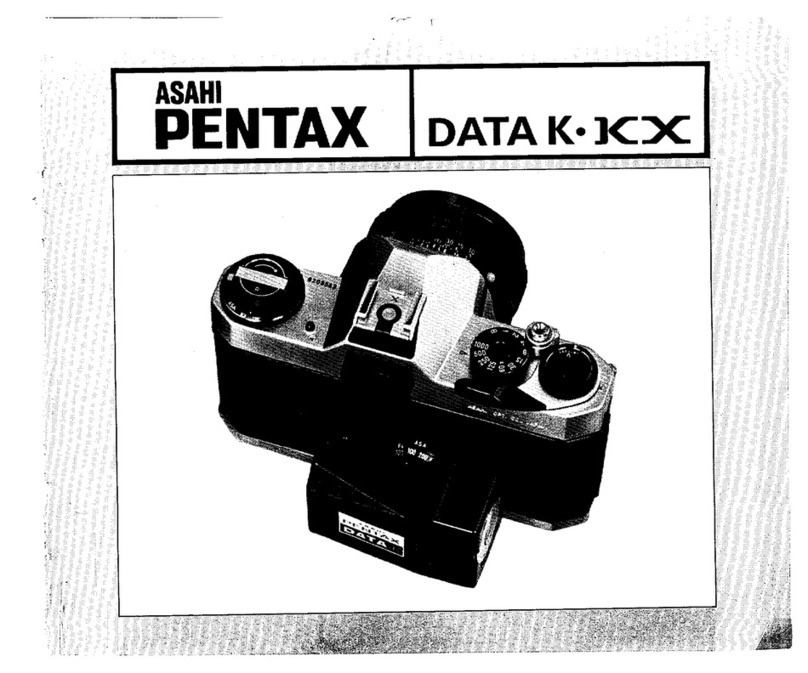
Pentax
Pentax K-X user guide

Pentax
Pentax Optio S50 operating manual

Nikon
Nikon COOLPIX Digital Camera Lineup Brochure & specs

Panasonic
Panasonic Lumix DMC-FZ200 Basic operating instructions
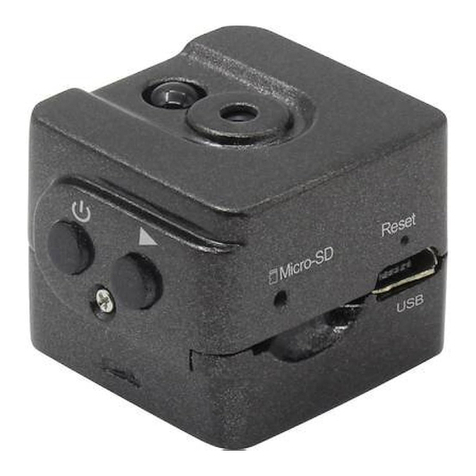
Sygonix
Sygonix 1550786 operating instructions
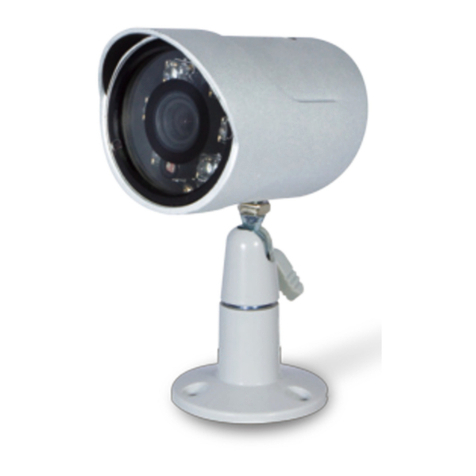
Planet Networking & Communication
Planet Networking & Communication CAM-IR138 Quick installation guide


